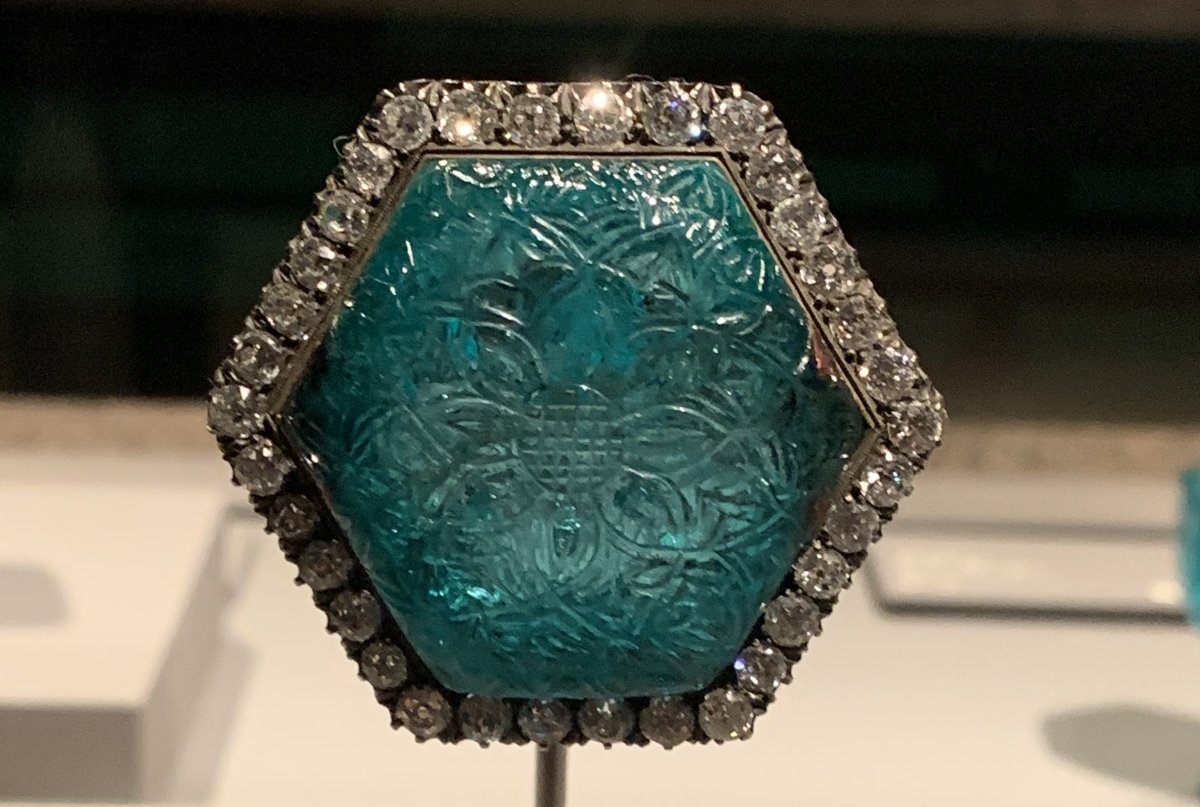
One of the most wonderful parts of the community we’ve formed here at The Court Jeweller is our geographic diversity—we come from literally all over the world! And so many of you are generous enough to show us some of the treasures that are located close to your homes. Today, one of our lovely readers takes us on a little tour of some fantastic Indian royal jewels displayed in Qatar.
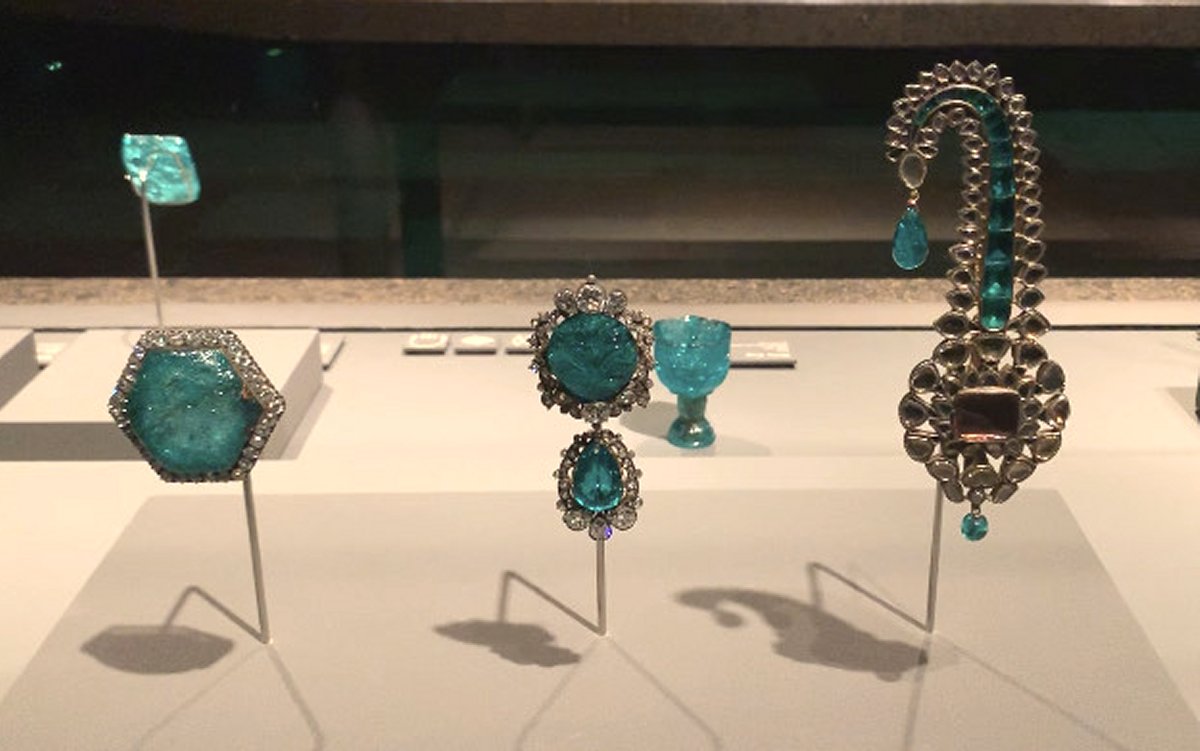
Joey, one of our kind readers, resides in Qatar, and recently made a visit to the country’s national museum in Doha. He generously sent along some photographs of some of the jewels on display so that I could share them with all of you. As you’ll note, many of the jewels originally come from India, perhaps the property of maharajahs or other princes. (Note the diamond and emerald sarpech, a traditional ornament worn on a turban, on the right in the photograph above.) The jewels are currently display in the National Museum of Qatar, but Joey reports that they’re usually shown at the Museum of Islamic Arts in Doha, which is currently under renovation.
Why does Qatar have such significant holdings of jewelry from India? Part of the answer can be found within the royal family that rules the country, the Al Thanis. Yesterday, we discussed Sheikh Hamad, a first cousin of the present Emir of Qatar. He’s an avid art collector, and he has a particular interest in Indian jewels. In 2009, Hamad attended a special exhibition of Indian jewels at the Victoria & Albert Museum in London, and from then on, he began acquiring similar pieces himself—so many, in fact, that he sold numerous items from the collection at Christie’s in New York in 2019, netting nearly $110 million from the auction. The proceeds were reportedly used to help fund the construction of the galleries housing the Al Thani collection in Paris.
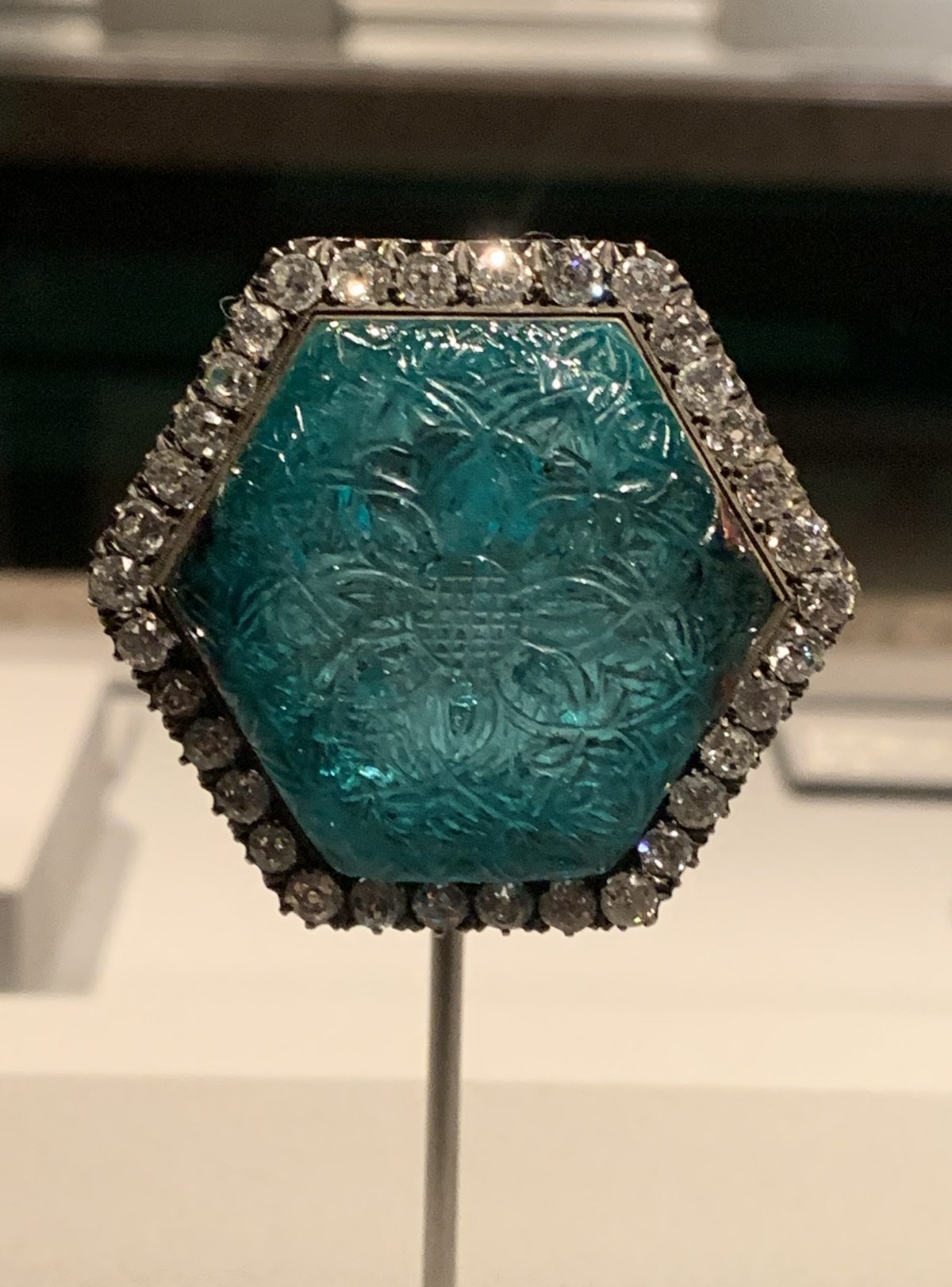
The jewels currently on display at the National Museum of Qatar showcase the fantastic gemstone carvings that are a hallmark of royal jewelry from India. This hexagonal piece features an intricately-carved emerald surrounded by a border of diamonds. It reminds me a lot of a similar brooch from the British royal collection, which was a gift to Queen Mary from several Indian royal ladies during the Delhi Durbar of 1911.
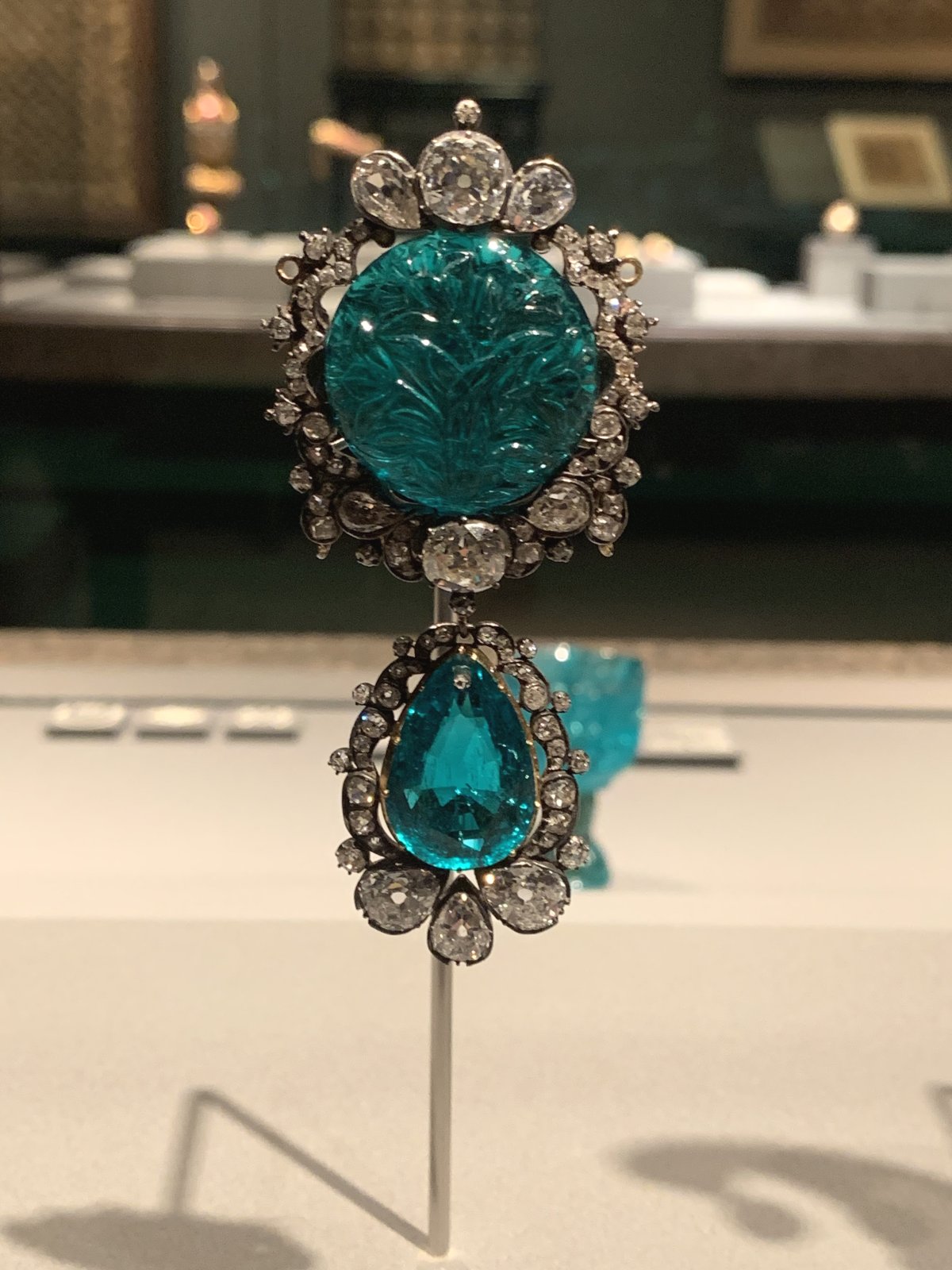
This brooch features another beautifully-carved emerald surrounded by diamonds, with a faceted emerald and diamond pendant.
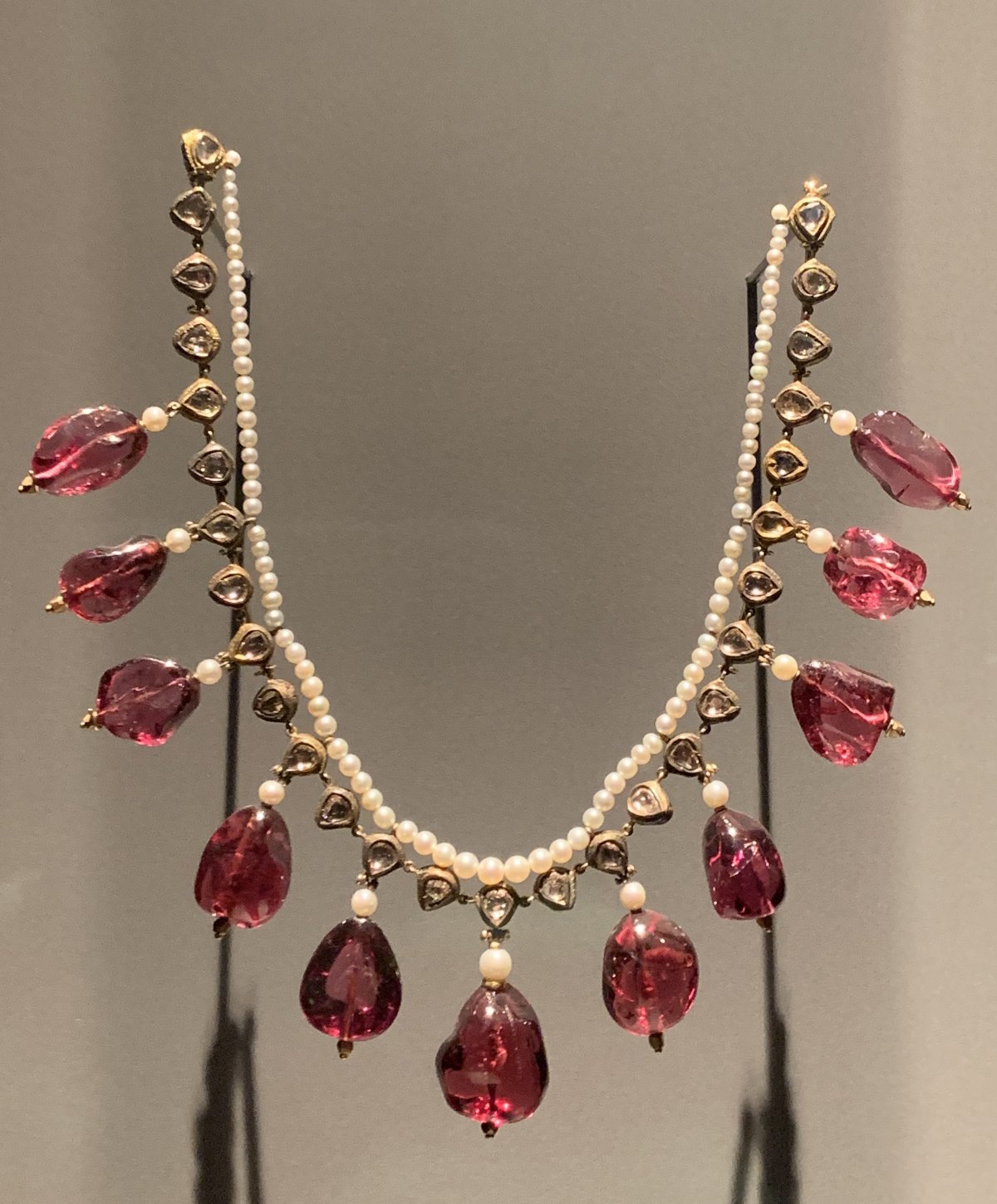
This remarkable necklace dates to the seventeenth century. It features pearls, diamonds, and spinels in its design.
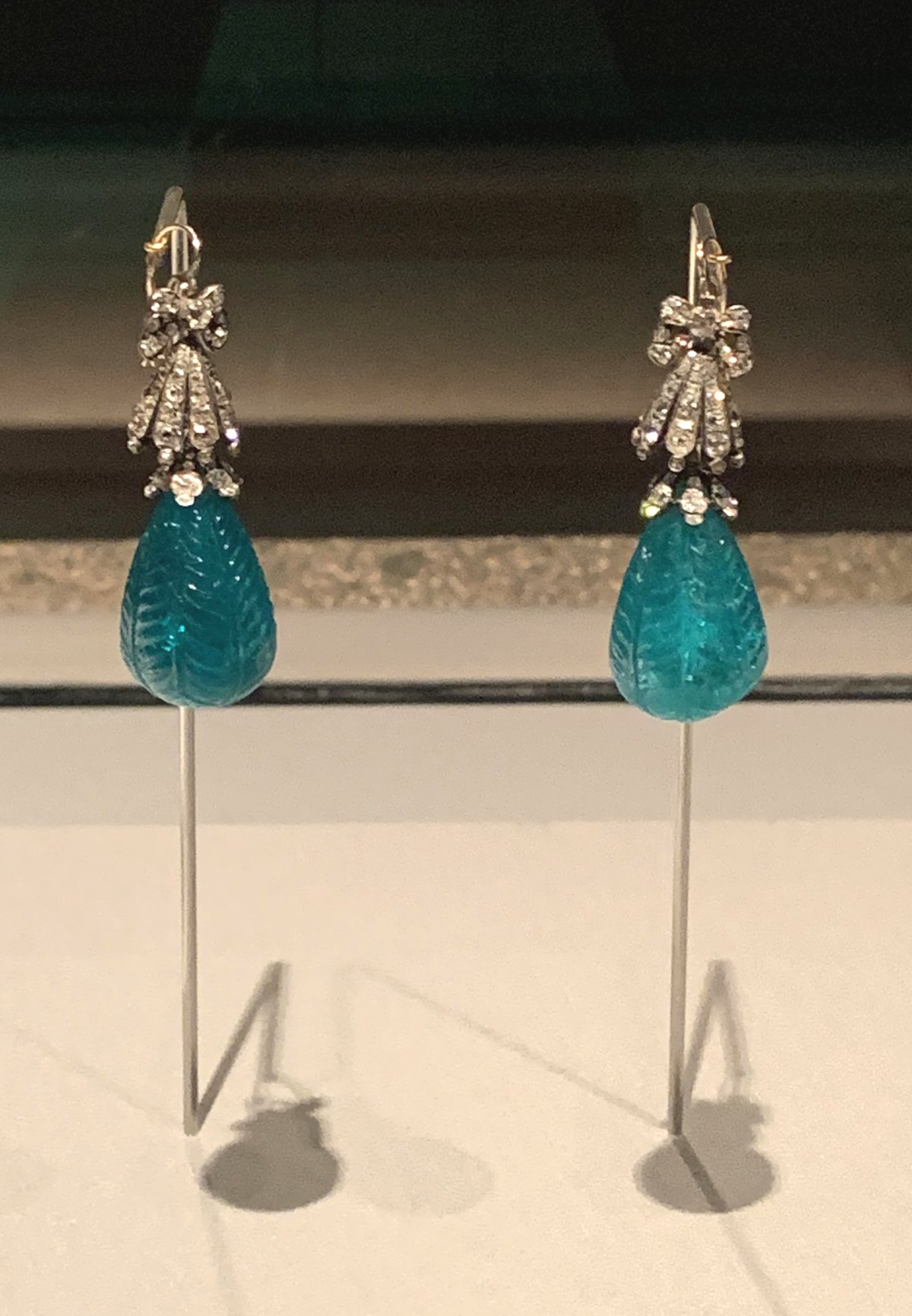
Also on display are a pair of magnificent diamond and emerald drop earrings. The cabochon emeralds again feature intricate carvings.
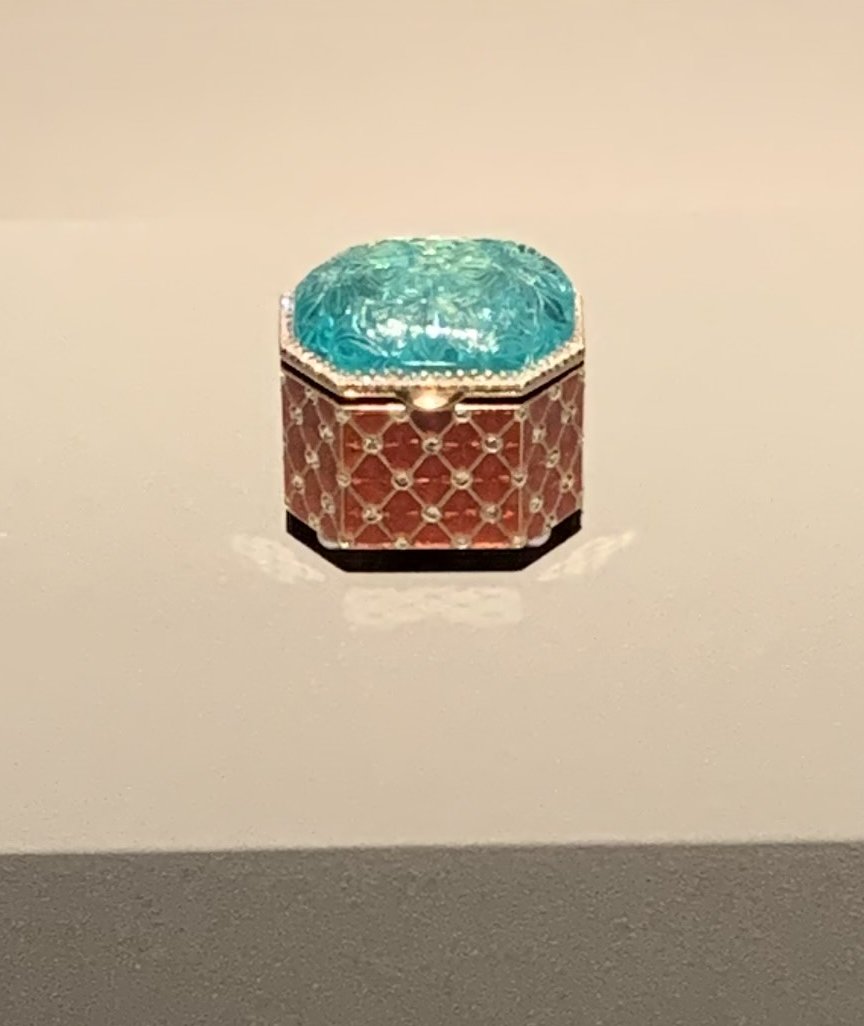
I think my favorite piece shared by Joey from his visit is this unexpected little jeweled objet d’art. It meshes the skillful carving of Indian artisans with the craftsmanship of one of my favorite historical jewelry firms, Fabergé. The gold, diamond, pearl, and enamel box was made in the firm’s Russian workshops during the nineteenth-century, with one of their famous artisans, Mikhail Perkhin, signing the piece. The top of the box, however, is much older. It’s another carved emerald from India, dating to the seventeenth century. Such a fabulous merging of jewelry talents from two different parts of the world!
Please join me in thanking Joey for sharing these wonderful jewels with all of us!
Leave a Reply
You must be logged in to post a comment.